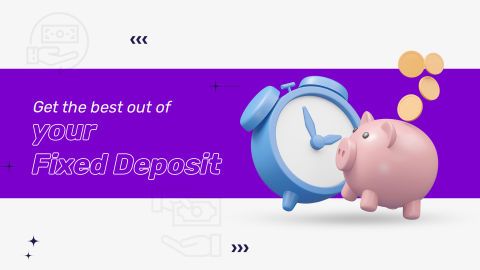Whether FD or equity is the better investment option depends on individual financial goals, risk tolerance, and investment horizon. Fixed deposits (FDs) offer safety, stable returns, and are ideal for conservative investors seeking capital preservation. On the other hand, equities can potentially deliver higher returns over the long term, making them suitable for those willing to accept market fluctuations. Diversifying a portfolio with both FDs and equity can provide a balanced approach, combining safety and growth potential. Ultimately, the choice should align with your financial objectives, time horizon, and comfort level with risk.
- Risk appetite
- Financial goals
- Age
- Income
- Expenses
- Liquidity requirement
Financial experts suggest looking into all these options and then going for a plan. When looking at Fixed Deposits and equity shares, two completely different investment classes, it is important to understand that no one option is the best. However, a healthy ratio of investments in both tools can be beneficial. Usually, experts suggest investors maintain a well-diversified portfolio. It stems from the simple idea of not putting all your eggs in one basket. A balanced mix of various asset classes makes for an ideal portfolio.
Let’s try and understand both investment tools.
Fixed Deposits (FD)
The fixed deposit is a fixed-income instrument not affected by volatile market movements. The interest rate applicable when booking an FD is maintained throughout the chosen tenor. It makes it easy to estimate the returns at maturity. A perfect tool to invest in if you have certain financial goals to fulfil in a stipulated time frame. It is one of the safest investment options available to date. Here the investor need not worry about losing the capital at all. However, this low-risk avenue does not offer very lucrative returns compared to its market-linked counterparts.
Banks, Post-offices, and Non-banking financial companies (NBFCs) offer fixed deposit facilities. Since Banks and post office FDs are backed by the central government they are extremely risk-free. The NBFCs also called the company FDs, are safe provided you go through the credit ratings provided by the leading rating agencies in India. Companies like Bajaj Finance FD offer the dual advantage of higher FD rates and deposit safety.
Few key highlights of the FD plan offered by Bajaj Finance
- Low minimum investment amount
- Flexible tenures
- Flexible payout option
- Online account management and booking facility
- Loan against FD facility
- High-interest rates
- Additional interest rates for senior citizens
Equity Shares
This investment class is purely market movement based and is very dynamic being a high-risk high-reward nature of functioning. Here an investor parks his money in company-owned stocks i.e. he opts for fractional ownership in a company. In this case, if the company does well the stock does well and the investor can earn handsome returns surpassing those of fixed income instruments like the FD. However, if the company faces losses the stocks plummet, eroding your investment and it can even eat into your initial capital investment. Hence, doing your due diligence is extremely important while investing in this asset class.
In conclusion, it is unfair to state that one investment is better than the other. It is a financial choice that can be, made wisely by factoring in the parameters mentioned above and can be different for different investors. However, the bottom line is that having a diversified portfolio of investments in different investment classes is extremely important. It offsets risks and ensures optimal returns overall.



